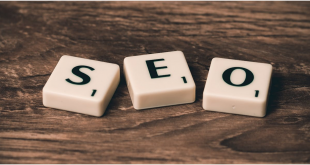
Working on content for Inbound Marketing is an important part of this strategy that is so important in today’s digital marketing. However, it is not enough to simply produce without understanding the relationship between what the public will consume and the process.
To help you understand the relationship between Content and Inbound, this article covers everything from the differences between the two to tips on how to work at each stage of the process.
Let’s go?
Difference between Content Marketing and Inbound Marketing
Contrary to what many people think, the terms are not synonymous. Each of them has its own function within marketing and works in its own way.
Firstly, Content Marketing can mean different things depending on the approach chosen. In general, the term is used to talk about media creation techniques that will organically attract the public’s attention on the internet.
Meanwhile, Inbound Marketing concerns the practice of creating a continuous marketing and sales process. Furthermore, it is important that the entry of new contacts into the process is done passively, which makes the system scalable.
The content made on corporate blogs and rich materials published on the website is usually the main fuel for attraction in Inbound.
However, there are ways for content to collaborate with Inbound Marketing at other stages of the process. To do this, both strategies must be thoroughly understood and the nature of the customers must be understood by the brand.
Is there Inbound without content?
The process of working with Inbound Marketing depends on generating leads, qualifying them and subsequently converting them. Therefore, some intervention needs to be done for these changes to happen.
It is normal to associate these interventions with Content Marketing. Especially if we consider that the term content refers to more than simply blog posts and downloadable content.
Among the possible formats of interaction with the public that we can call content, we have:
- Blog posts;
- Videos on social media or YouTube;
- Rich materials ;
- In-person lectures;
- Physical activations in strategic locations;
- Sponsored posts on news portals;
- And other ways to deliver value through media.
Therefore, it is possible to say that Content Marketing is essential for carrying out Inbound Marketing, but it also talks about issues that go far beyond this digital marketing strategy.
Creating content for the Buying Journey stages
Basically, Inbound Marketing has 4 steps. They make the transition from the first moment, when the public is unaware of the brand and the product, until the conversion into a business.
Content Marketing can act in different ways at each stage. However, for this process to really work you need to have knowledge about the target audience or buyer persona. Only then can you be sure that the content created is relevant.
1 – Learning and Discovery
The Learning and Discovery stage is a moment where content is worked on in the way that most people think of it in Inbound Marketing. Therefore, this is where content with organic search comes in.
It’s very common for people to think of SEO as an end, but in reality these positioning techniques and gaining traffic on the website are a means. This is because it is through the application of SEO in the writing of blog posts and website pages that attracts audiences who are unaware of the brand.
As we said above, it’s important to understand that this step is all about your personas. If you know the pain points you solve for them, it becomes easier to identify what they are searching for on Google and can bring attention to your solutions. Everything else is a shot in the dark.
At this stage, focus on creating blog posts that rank well in keyword searches that combine volume and relationship with your personas’ pain.
Also don’t forget that the success of this stage depends on including the public in your lead base. Therefore, create at least one Call to Action that directs the audience to a content-rich landing page where they can exchange contact information for a little help with something.
2 – Problem Recognition
In the second stage of the Buying Journey, it is time to work so that the public understands that they have a problem that needs a solution. After all, this is not always clear at first.
Now is the time for your content to move away from focusing on attraction and start driving conversion. But anyone who thinks that just writing another article that talks about problem solving is wrong and everything will be on track.
To reach the Problem Recognition content, the person must have gone through Learning and Discovery. Therefore, go to your article from the first stage and work on the Web writing until it has enough links for the visitor to remain engaged.
Remember the rich material we talked about for the Discovery stage? He can work with a focus on informing the person about the problem.
Let’s work with an example. Let’s say you’re creating rich content for the Inbound Marketing of a cleaning services company.
From there, you created a text about cleaning mold as an attraction. You can offer rich material that details how to clean different complex materials, such as porcelain, specific types of stone, etc. The text can be worked on to explain the care and difficulties of cleaning each material and have a short article talking about hiring specialized professionals.
3 – Solution Consideration
Now that your contact knows they have a problem and need help solving it, it’s time to tell them about possible solutions.
The content for the Solution Consideration stage in Inbound Marketing is a time of transition. Until now, the content has been working on connecting with the customer. Now is the time to direct this established relationship towards conversion.
Despite this, be careful not to rush the sale of the product too much at this stage. This transition needs to be done at the public’s pace or it can drive away potential business and waste previous efforts.
At this stage of Inbound Marketing, the content can go in a more comparative direction. For example: if we are going to pursue the idea of cleaning services, we could work on an article comparing cleaning the house on our own or hiring a specialized team.
There are many possibilities that must be taken into account when making this comparison between solutions work. The most important thing is to be careful so that it doesn’t look like you’re forcing your product.
4 – Purchase Decision
Finally, we arrive at the pre-conversion moments of the public. The content made for Purchase Decision, finally, is the one that displays the advantages, benefits and reasons to close a deal with you.
This step is the final push on the lead you have already established a relationship with. There’s no point in thinking that this step will do all the work if you ignored the previous stages.
You can even invest in PPC to capture leads in the final stage of the Journey and then just try to score the goal. However, this is an expensive process and difficult to scale.
Basically, you can think about the content that influences the purchasing decision with the same elements that you consider on a landing page:
- Unique value offering – what does your product or service offer that makes it unique?
- Benefits – what does the product offer that can impact people’s lives?
- Differentiators – what points differentiate your company and products from competitors?
- Social proof – what do previous customers think of your product?
From these topics, it is possible to break down which subjects to work on in your content.
Organizing content for Inbound Marketing
Just as important as knowing what to post is knowing when and how much to post. By this, we mean that you need to know how to distribute your content production efforts between the different stages of Inbound.
Basically, the bulk of content production in any Inbound Marketing channel should be focused on Learning and Discovery. This is because this is the stage in which the absolute majority of the public naturally finds itself.
The priority, from then on, should be to reduce the number of publications a little as the Shopping Journey narrows down. There is no exact formula for how much to produce on each channel, but we recommend that each stage have half as many publications as the previous one.
Following this advice to get started, you can organize your editorial calendar for social media, blog posts or even newsletters following a proportion like this:
- One Enchantment publications (divided into tutorial and usage guide);
- Two Purchase Decision publications (one for Unique Value Proposition and one for Social Proof);
- Four Solution Consideration publications (divided between comparisons and a little product presentation);
- Eight Problem Recognition publications (which will demonstrate that the issue the customer is dealing with is a challenge to be overcome);
- Sixteen Learning and Discovery publications (which will attract an audience that does not yet know the brand).
Adding up all these publications, you have the equivalent of 31. In other words: an entire month of editorial calendar with daily publications.
 Blogmado Empower Your Wealth: Expert Insights for Success
Blogmado Empower Your Wealth: Expert Insights for Success



